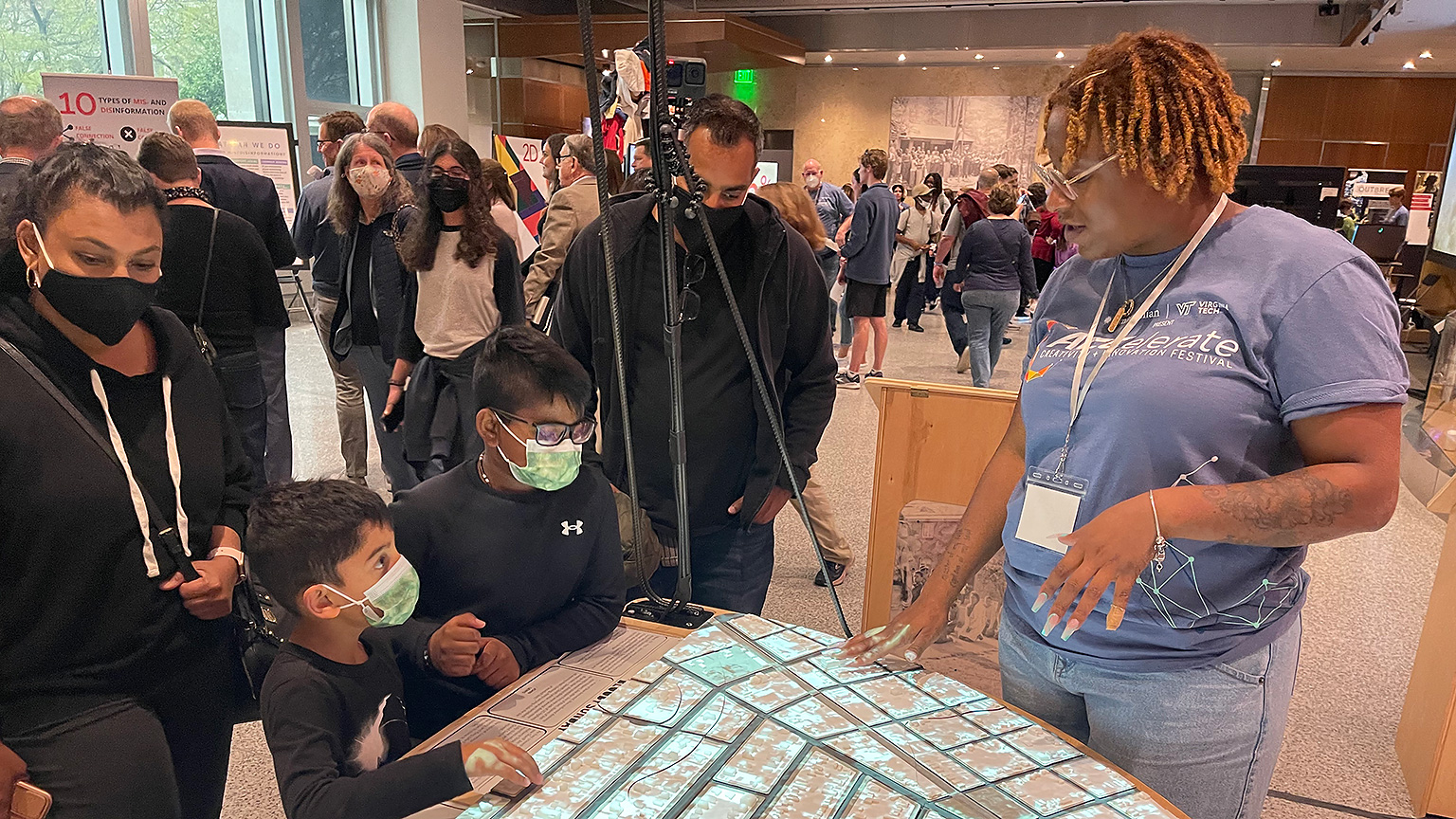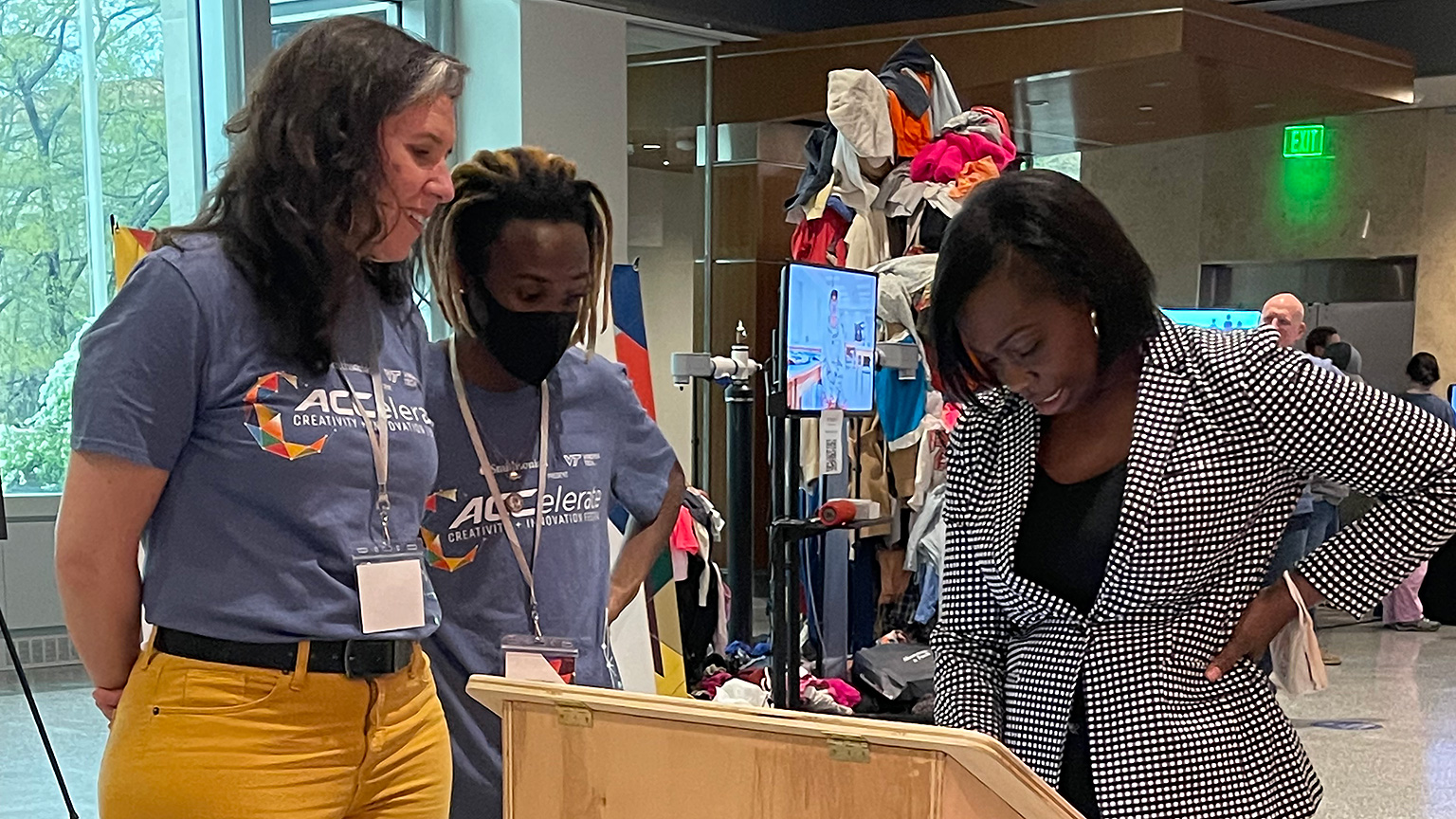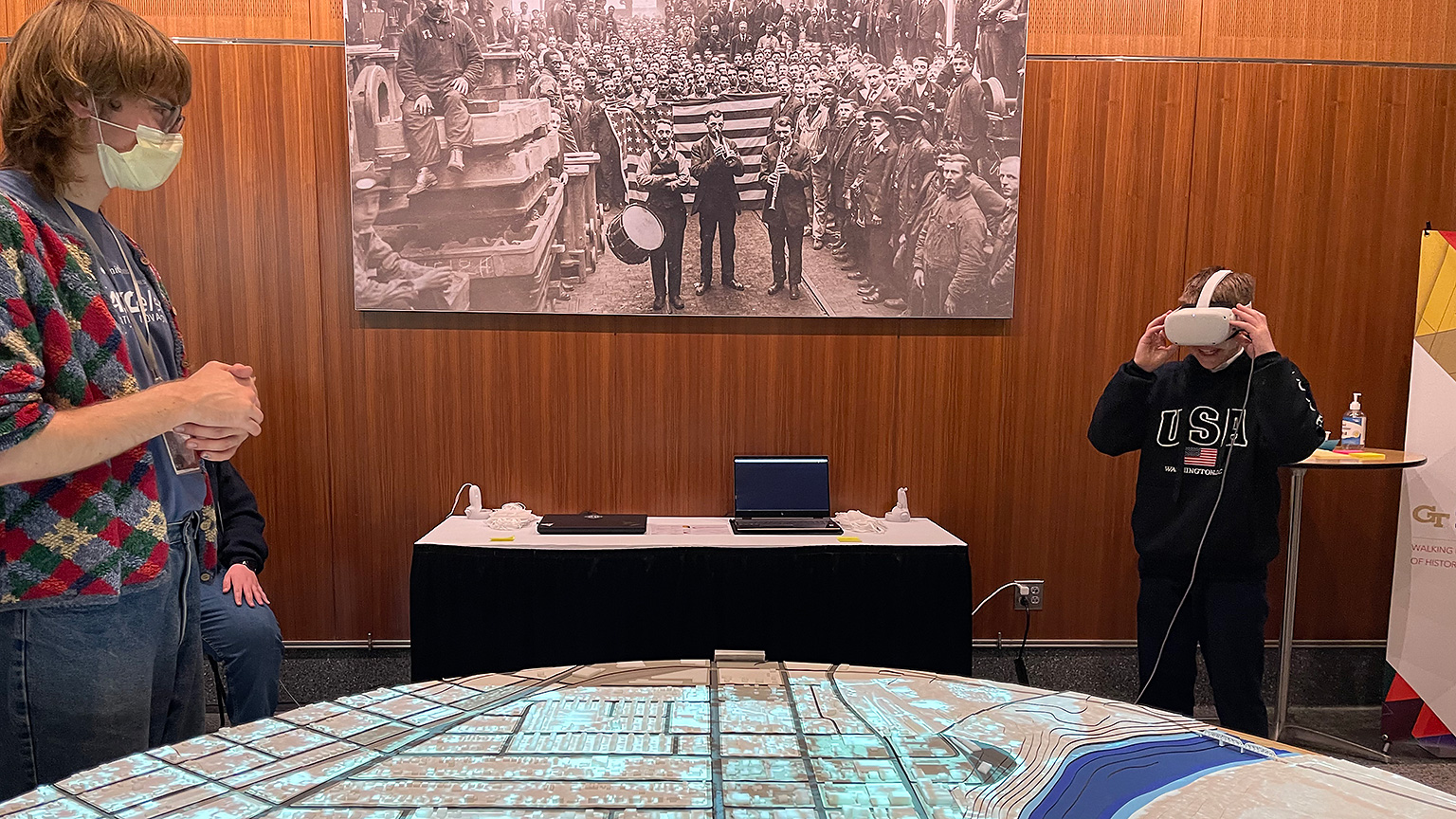
Recovering History with Digital Design
Recovering History with Digital Design
School of Architecture Assistant Professor Danielle Willkens can do amazing things with digital architecture reconstructions, including taking people back to Selma, Alabama in 1965.
A Georgia Tech team exhibit, which won a People’s Choice Award while on display in the Smithsonian’s National Museum of American History recently, will be on display in the School of Architecture. Willkens leads the team of student researchers who created the exhibit.

The exhibit, “Walking in the Footsteps of History,” immerses visitors in the spatial and cultural context of Selma, Alabama, around the time of “Bloody Sunday,” March 7, 1965. Willkens’ team put the exhibit together for this year’s Accelerate Creativity and Innovation Festival.
Georgia Tech Teams Reflect on 2022 ACCelerate Festival
“This exhibit explores a geospatial timeline of the marches in the region, largely focusing on the time between the prayer vigil held in Marion, AL on the evening of February 18th, 1965, resulting in the death of Jimmie Lee Jackson, to the arrival of the marchers to the Alabama Capitol Building on March 25, 1965,” Willkens said.
Although focused on the past, the exhibit serves as part of an ongoing effort to preserve and restore historically significant places that have been ignored.

“Our exhibit hopes to prompt a deeper inquiry into the city of Selma,” Willkens said, “advocating for the preservation of sites frequently ignored in the conversation: Good Samaritan Hospital (the only site that treated Black patients in the region), Brown’s Chapel and the surrounding complex known as the George Washington Carver Homes, and the area around the Bloody Sunday conflict site that is in a precarious state of decline.”
Contemporary digital reconstructions such as this offer visitors the chance to connect with history more directly than previously possible. Viewers can explore documents too fragile for public access, or tour sites which are hard to access or no longer exist.
“In many ways, this is a visualization of civil rights conflict archaeology, and we hope that our project’s methods for capturing contemporary digital documentation of associated sites (3D scans of sites, aerial photogrammetry, and 360 videos) and melding this content with rich historical narratives and archival images, videos, oral histories, and documents can become a reputable workflow for other sites, bringing history to life in new ways.”

The exhibit uses multiple media interfaces to stimulate viewer engagement. “This is an interactive exhibit, where the model with projection mapping, the touchscreen interfaces, VR experiences, and interpretive column complement each other to tell a broader story about Selma, the marches in 1965, and the ongoing struggle to protect voting rights,” Willkens said.
Willkens has been working in Selma since 2015, collaborating with researchers from Auburn University. “Our collaborations also expanded to include city officials, museum professionals, librarians, archivists, and teachers from Selma, as well as people from the Department of Transportation, tourism offices, the local interpretive centers for the National Park Service, and local entrepreneurs,” Willkens said.
“Amid all of our project partners, it has been most enlightening and rewarding to collaborate with a few of the remaining foot soldiers and their descendants who have been working so hard to preserve and disseminate the full story of Selma.”
Research and exhibit design team
• Danielle Willkens, PhD, Assistant Professor
• Junshan Liu, GT Visiting Scholar and Associate Professor
• Sydnee Henry, M.Arch candidate
• Sean Li, BS Architecture candidate
• Sakshi Nanda, MS in Urban Design candidate
• Patricia J. Rangel, M.Arch candidate
• Christian Waweru, BS Architecture candidate
• Eden Wright, M.Arch candidate
• Thomas Bray, BS Architecture 2021
• So Min Park, BS Architecture 2021
GT Arts
- Aaron Shackleford, Director
- Kara Wade, Student and Artist Engagement Coordinator
- Nathalie Matychak, Assistant Director - Producing & Residency
